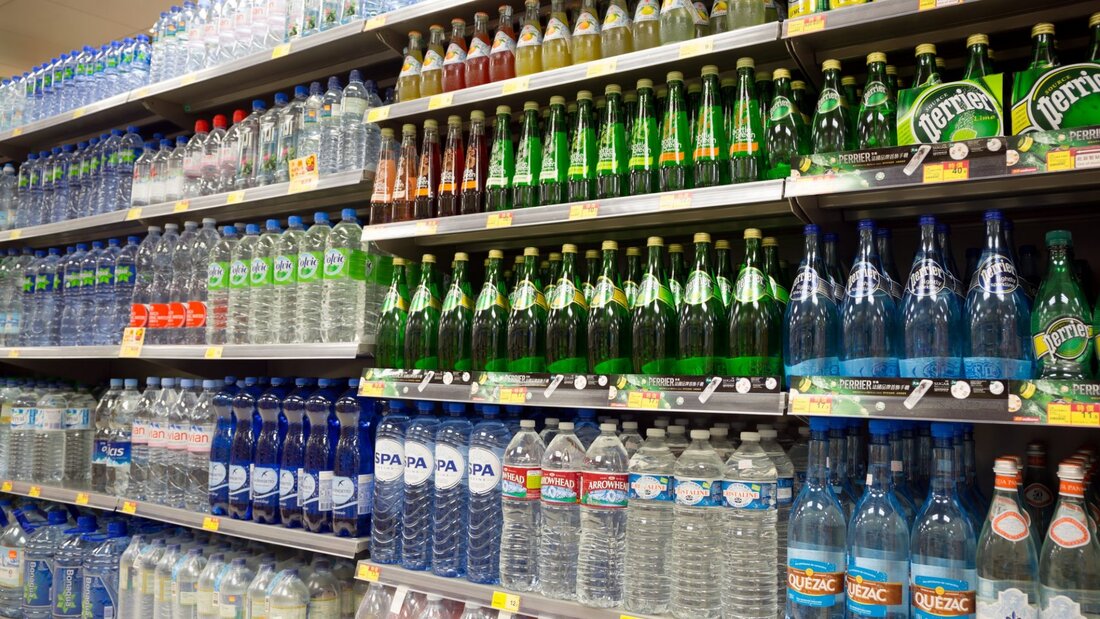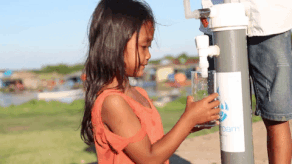|
Here at Wateroam, we believe everyone deserves clean, safe drinking water. Described by the United Nations (UN) as a basic human right, we too actively strive to provide safe, drinking water to individuals across the globe. Unfortunately, water scarcity is a highly complex issue that goes beyond merely environmental factors. Sometimes, water scarcity is driven not by a lack of water but a lack of affordable access to it; for example, water can be costly and often those who need it the most can’t afford to buy it. Today we will focus on the sale of bottled water; despite being a feasible and capable solution to water scarcity (environmental impacts aside), the complications of larger forces often limit its potential positive impact. In this blog, we compare the prices of a 1.5L bottle of drinking water while also considering each country’s socio-economic background. This will provide us with an excellent model when understanding the inequity of water accessibility. The most expensive bottle of water At an initial glance, Costa Rica, a country with a developing economy, has the most expensive bottled water on the planet. At 2.2USD, it ranks higher than water prices in more developed economies like Japan’s 1.13USD and Switzerland’s 0.94USD. Of course, this might be an outlier since the prices of bottled water in other developing economies are at the tail end of the scale, or there could be a reason we haven’t discovered yet. The visible price is not the true cost Some extremely important to note is that the price differences of bottled water may vary by only 50 cents, but the socio-economic backdrops of countries differ greatly making the true cost much greater than a bit of change. Take for example The Philippines and Singapore: the prices of one 1.5L bottle of water is 0.77USD and 1.28USD in each country respectively. If we were to compare them as percentages of each nation’s average income (price of water/average monthly income**), the difference is obvious and stark. It costs nearly 10 times as much for an average Filipino resident to purchase a 1.5L bottle of water than it does for a Singapore resident. Yet, Singapore is a nation with potable tap water, while nearly 7 million Filipinos still do not have access to clean drinking water. To put it simply, bottled water is significantly cheaper for those who already have access to clean drinking water; because of this, there are larger economic forces that limit the potential impact and distribution of bottled water as a short-term solution to water inaccessibility. This trend is visible throughout the world. The table below showcases the costliness of water in a handful of countries. The last column showcases how much more the true cost of bottled water in a lower-income economy is compared to a higher-income economy. In Europe, it is over 8 times more expensive for a Georgian to buy water than it is for a German.
This is of course a rudimentary assessment of the economics of water accessibility. A more detailed look should factor in other aspects that may cushion or aggravate water scarcity issues. Nevertheless, the trend is clear. Water scarcity is not merely a result of geographical limitations but a product of other man-made forces as well. Unfortunately, those in low-income countries continue to be disproportionately affected by these causes. It is also important to understand the disproportionality of physical access to bottled water, particularly in developing countries. It would be easier to purchase bottled water in the Malaysian city of Kuala Lumpur than it would be in the Malaysian province of Sarawak. Rural communities face a unique set of challenges due to the heavy logistics involved in providing greater access to water, be it in transporting gallons of bottled water or laying down pipelines. Combating these issues is often expensive and sometimes even impossible. In Nepal, for example, the treacherous terrain means that the rural communities living in the mountains have to rely on natural brooks or travel long hours to get drinking water. A bottled water solution has more gaps than may be considered! Water scarcity is a complex issue, one that might take years to fully comprehend and longer to eradicate. That's why we create solutions to help plug the current gaps in the system. Wateroam’s ROAMFilter Plus is designed to specifically overcome the obstacles that still enable the issue of water scarcity. Portable, easy-to-set up and able to serve hundreds, the ROAMfilter Plus side steps these challenges to provide clean drinking water to communities all over the world. We know this isn’t a feat we can achieve alone. If you too believe in the fight to end global thirst, please support us as we continue to improve the life, living and livelihood of individuals everywhere.
Blog Author: Juliano Prastyo Chief Editor: Michelle Falcone Sources:
*price of bottled water as of July 2020 https://www.numbeo.com/cost-of-living/country_price_rankings?itemId=13 **Average monthly income as of August 2020 https://www.worlddata.info/average-income.php https://checkinprice.com/average-and-minimum-salary-in-tbilisi-georgia/
1 Comment
|
Want more?Click below to see what other blog topics might peak your interest



Social Awareness Blog Archives
August 2022
|
- About Us
- Products
- Solutions
- Resources
- Get Involved
-
Blog
- The Global Water Situation
-
Facts about Water
>
- Water supplies for crisis
- WaSH During Emergencies
- Well Water Cleaning and Filtration Guide: Southeast Asia
- Gravity-fed Water Systems: Water Purification and Filtration setups in Southeast Asia
- A Guide to Rural Rainwater Harvesting and Filtering
- Water Shortages and Their Effect on Children in Rural Schools
- WaSH Planning and Design Framework Resources for Indonesia and the Philippines
- Rural Community Water Supply: Water Systems in Villages
- Info on our Products
- Impact Stories
- Upcoming & Past Events
- Contact
- Store
- About Us
- Products
- Solutions
- Resources
- Get Involved
-
Blog
- The Global Water Situation
-
Facts about Water
>
- Water supplies for crisis
- WaSH During Emergencies
- Well Water Cleaning and Filtration Guide: Southeast Asia
- Gravity-fed Water Systems: Water Purification and Filtration setups in Southeast Asia
- A Guide to Rural Rainwater Harvesting and Filtering
- Water Shortages and Their Effect on Children in Rural Schools
- WaSH Planning and Design Framework Resources for Indonesia and the Philippines
- Rural Community Water Supply: Water Systems in Villages
- Info on our Products
- Impact Stories
- Upcoming & Past Events
- Contact
- Store



.jpg)